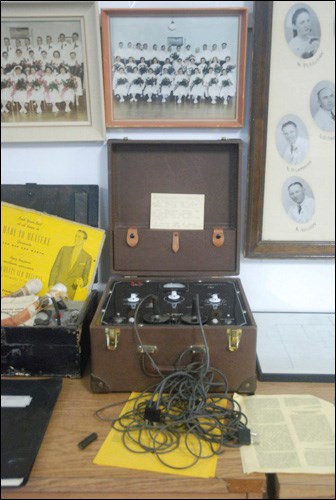August 3, 1945, a newspaper proclaimed the Saskatchewan Hospital to be one of the leading psychiatric facilities in North America. The article pointed out only one shortfall: overcrowding.
Fast forward 65 years, and we see the same situation at the Saskatchewan Hospital.
Opposition leader Dwain Lingenfelter toured the facility Tuesday. Although impressed by many of the hospital's accomplishments, such as the many programs available for patients, Lingenfelter heard of the need for more private space in the facility.
The Saskatchewan Hospital is the only psychiatric rehabilitation facility in Saskatchewan, similar to the Centennial Centre in Ponoka, Alta., or the Selkirk Mental Health Centre in Manitoba. Its current capacity is 156 beds, but in the 1940s accommodated up to 2026 patients. The average length of stay for patients is one to three years, and the facility discharges an average of 40 patients per year.
The facility offers a number of unique programs, such as the Vocational Incentive Program, where patients grow plants in a greenhouse for sale among other activities; Industrial Therapy, where patients construct items such as wooden lawn chairs; the STEP program for women, where baking, sewing and crafts are common activities; and both group and individual therapy groups.
Despite continuing to be a leader in the country for its programming, outdoor atmosphere and low suicide rates, patient surveys always dip on one issue: lack of private space.
Tammy Dimmick, nurse manager at the hospital, said the hospital would like to move to primarily single and double rooms. Although single rooms are ideal in terms of privacy, Dimmick stressed the need for keeping double rooms, as some patients struggle with loneliness and benefit from the company a roommate provides.
"People feel more accepted here, and often form strong relationships," she said.
However, simply renovating the hospital won't work, as more facilities, such as washrooms are required, which is no easy feat in a turn of the century building, damaged by fire in 1976.
"The pipes are over 100 years old," explained Dimmick.
Ideally, a new facility would be built, but that idea is not without problems.
The Saskatchewan Hospital has historical value to many people.
MLA Len Taylor said, "You would be hard-pressed to find anyone in the Battlefords that isn't connected to the hospital in some way."
The hospital features a chapel built by stonemason Emile Schoen. Schoen, who was born in 1886, spent many years as a patient in the hospital.
There is also a museum housed in the hospital, with items ranging from electroshock therapy equipment to photographs to old newspaper clippings.
And many may not be aware that North Battleford's mayor, Ian Hamilton, grew up on the grounds of the hospital, living with his family in one of the cottages that used to be occupied by hospital employees and more independent patients.
Preserving features such as these are important to maintaining our history, said Taylor.
"Saskatchewan's history in the field of psychiatric care is unique and very interesting," he said.
Lingenfelter asserted the need to not be too hasty at tearing down the facility, as was the case in Weyburn.
"We are such a tear-down society," said Lingenfelter, saying that cost-effective isn't always the best way to go.
Lingenfelter suggested a strategy be developed with the community to look at innovative ways of preserving parts of the hospital while building new parts to accommodate the needs of an evolving facility.




